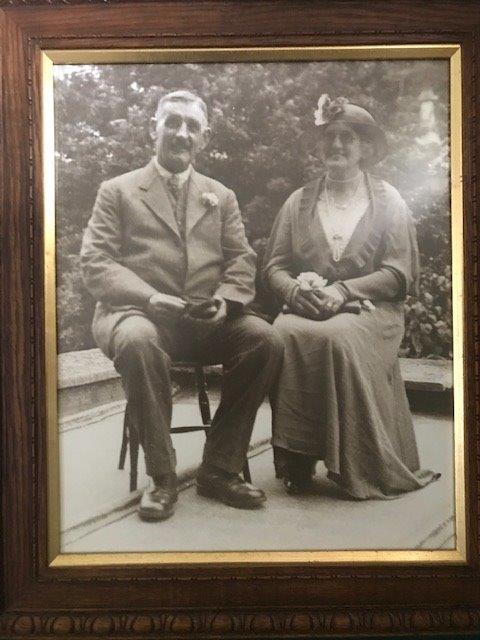
The story so far: George Gregory (1879-1940) left behind a typed record of much of his personal, family and community history. It is not known how many pages in all were written, but just over 100 came to light among the papers of one of his seven grandchildren. Sadly, even this collection is incomplete, with some missing from the beginning of the story and the set ending abruptly halfway through the description of a tragic matter concerning his third son.
The manuscript is more than George’s autobiography. It is a memoir of his own life plus reflections and recollections of the lives of those who came before him and were around him. He tells what he knew of his father and mother and the life they had. So, although George himself lived from 1879 to 1940, he gives insights into the period from 1850 to 1919.
Sadly there is nothing in the found document for the period after 1919. It is impossible to know whether tales from 1919 to 1940 were yet to be written by George or whether they have been lost.
In the pages found it is George’s voice telling the story of George’s immediate family as he remembered it. It is not clear who was doing the typing. Did George’s household have a typewriter? Was he a capable typist? Or did he dictate it to Ilott, his wife, or to Richard, his eldest son? Richard certainly had literary and poetic capability and interest, having had one or more of his short stories broadcast on the BBC.
It is may be fanciful to think that after dinner each evening for a period Ilott and George would settle down to another page or two of the story. Ilott might remind him of things yet to be covered. His wife’s first name is sometimes spelt ‘Illott’ and there are just a few typographical errors caused by homophones, such as ‘Brightleigh’ for ‘Brightley’, all of which suggest that a copy typist was working from an audio source – a tape recorder. But in 1934?

Accompanying the manuscript is a single page that might be described as an aide memoire for George’s book. It is a list of the events, anecdotes and characters that someone thought could or should be mentioned.
George and Ilott’s third son, Kenneth, was born in 1912. At one point the narrative reads: “Looking back these 15 years, I realise that if he had lived life would have been different. He would have been twenty two now.” This places the creation of the manuscript in 1934.
The narrative does not follow a strict chronological line but the main stages of George’s life are revealed in due order. First he describes the situation of his father and uncle and the process by which the former, the younger of the two, came to have his own small farm and flour mill. There are short sections dealing with George’s teenage years, during which his brother Arch was his chief companion and playmate, and then his experience on the rugby field and in the Boer War.
There follow major sections on his working life with his father at the mill and, most richly, his courting of Ilott, his wife-to-be. It is in this section that George’s writing reaches a glorious descriptive pitch – in places more poetry than prose. The events are set in the Exmoor region, on the border between Somerset and Devon – an area that is new to George and which he comes to love very dearly.
The descriptive authority and confidence of much of George’s writing in these necessarily ‘romantic’ episodes is what captures the imagination and interest. How is it that a full-time farmer in an isolated part of the UK’s West Country came to possess the style, the observational acuity, vocabulary and literary tricks (metaphor, simile) to produce such material? What was the process through which George developed the confidence to produce written work that is consciously designed as art rather than mere reportage?
Whatever its provenance, West Country Tales is a true delight and an authentic and valuable record of rural social history in the south-west of England from 1870 to the end of the First World War.
